Lance Thomas Stuchell
Posts tagged with Assessment
Showing 21 - 30 of 73 items

In the summer and early fall of 2021, the Digital Preservation Steering Committee undertook a focused assessment to surface current roadblocks to implementing a more comprehensive digital preservation program. Keep reading to find out the results and our plan to address our programmatic gaps!

A redesign of the library blogs platform kicked off last fall with time dedicated to understanding the current site and its usage, reviewing what other libraries do, and conducting a needs assessment survey with stakeholders. This approach has allowed efficient decision making and informed requirements, while engaging stakeholders early in the redesign process.
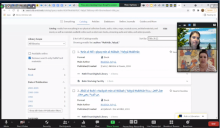
The University of Michigan Library is home to a vast collection of materials representing dozens of languages. U-M Library Catalog Search, however, can cause difficulties for users searching for materials in languages other than English. In Summer 2021 we conducted an exploratory study on the experience of searching for non-English materials within U-M Library Catalog Search in order to better understand challenges users face, how they overcome them, and what we can do to mitigate the problem.

Have you ever done a one-shot instruction session and thought, “I’m overwhelmed with the amount of information I talked about and I’m a librarian. I wonder how the students feel?” I felt that after teaching several capstone engineering courses. So I decided to create a series of videos instead. This blog post describes what I learned about students’ library learning preferences.
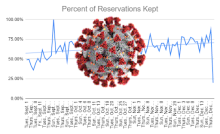
The interruption to library services caused by COVID-19 meant we needed to quickly develop new data collection strategies to give us information to manage our modified services for the 2020-2021 academic year. It also gave us an opportunity to conduct a deep reflection and assessment of how our regular collection had been going, and to be ready to make changes as we reinstituted more regular services. In two posts, we describe the evolution of our data collection efforts.
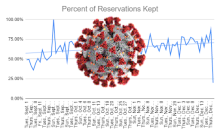
The interruption to library services caused by COVID-19 meant we needed to quickly develop new data collection strategies to give us information to manage our modified services for the 2020-2021 academic year. It also gave us an opportunity to conduct a deep reflection and assessment of how our regular collection had been going, and to be ready to make changes as we reinstituted more regular services. In two posts, we describe the evolution of our data collection efforts.

When you use library services, do you think about the interaction-generated data? The U-M Library collects data on its patrons, from user profiles to online resource access information. Recently, the library has considered using this data to engage in library analytics, making inferences about users’ future behaviors. An Engagement Fellows project that began in 2020 seeks to learn more about what library patrons think of the use of analytics at the U-M Library.
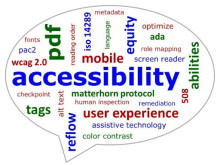
The Accessibility Remediation Team was created to serve as a resource for students, faculty, and staff when they needed more accessible library content. Beginning in the Fall 2020 we identified tools and processes to use in remediating video, audio, and PDFs for accessibility. As part of our service, we focused on assessment, gathering feedback through ‘exit’ surveys of colleagues and patrons, and using project management tools to gauge the amount of time tasks take to complete.

When the pandemic quickly shut down our libraries' physical spaces, in-person services, and access to many of our physical resources, the Library didn’t know when we might reopen to campus. Over the last 16 months members of the Library Environments department collaborated with Facilities and department managers and colleagues to design, create, and evaluate our pandemic-based changes to physical spaces, workflows, and onsite services.
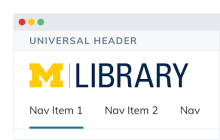
U-M Library’s universal header is the light gray bar at the top of the library website and Library Search that aims to help people recognize that they’re on a U-M Library website, and links to our different sites and services through the “Explore” menu. In the fall of 2020, the Design System Team conducted remote usability testing that helped us to understand people’s experiences and identify opportunities for improvement.